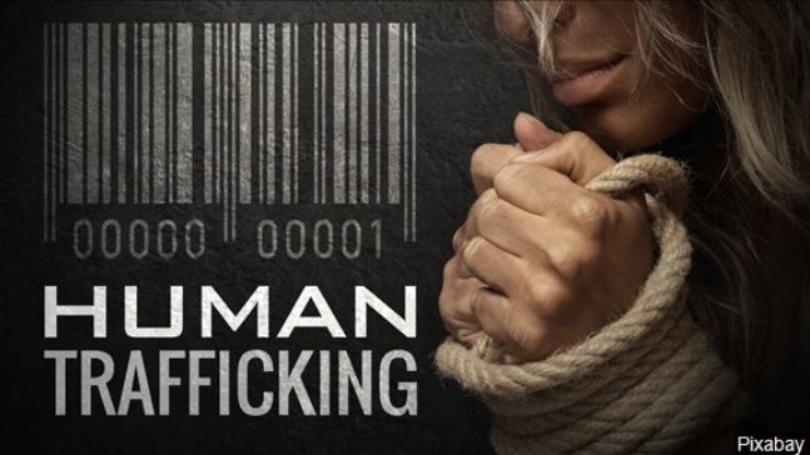By Akanimo Sampson
The adoption of the Law N° 2015-36 which criminalises the smuggling of migrants in Niger, and the closing of several gold mines, once magnets drawing job seekers, have left many people living along northern Niger’s migration routes in search for alternative income-generating activities.
Together with local authorities, the International Organisation for Migration (IOM) has been working hard in recent years on strengthening the socio-economic development of communities living in the migratory zone.
Last week, IOM completed a fish farming project in Bilma, in the Kawar region in northern Niger, to the benefit of more than 6,500 people, through its project Community Stabilization Initiatives in Northern Niger (COSINN), funded by the German Federal Foreign Office.
Sierra Leone is a source, transit, and destination country for thousands of children and women trafficked for forced labour and sexual exploitation every year. Although no official database exists to accurately measure the scope of the phenomenon in the country, it is believed to be affecting mostly children who are taken from their homes and forced to beg on the streets, or work in homes as houseboys, in mines or in plantations.
Human trafficking also affects young Sierra Leonean women and girls who are scammed into paying hefty sums of money for fake employment offers in foreign countries – in the Gulf for instance – only to be coerced into modern slavery or sexual exploitation.
In 2005, three years after the end of a civil war which cost more than 50,000 lives and set the ground to human trafficking networks, Sierra Leone passed the Anti-Human Trafficking Act, thus recognizing the phenomenon as a major national issue.
A National Task Force on Human Trafficking was established with the responsibility to coordinate the implementation of this Act, especially with regard to the enforcement of the law against trafficking.
However, in 2017, only 9 per cent of the victims of trafficking identified by the Sierra Leone Ministry for Social Welfare, Gender and Children Affairs (MSWGCA) came from the Western Urban District where Freetown is located.
“Criminal cases rely on victim testimonies, but this can be difficult to access since the Task Force is located in Freetown and most victims come from far away provinces,” explained Marian Harding-Tommy, Senior Social Welfare Officer for Human Trafficking at the MSWGCA.
“Because victims of trafficking often cannot afford the expensive trip from their district to the capital to testify or present evidence, their cases are closed,” she added.
But this will soon change. Last week, the International Organization for Migration (IOM) supported the MSWGCA in the decentralisation of the National Task Force in 14 of Sierra Leone’s districts to increase victims’ and potential victims’ access to information, protection and justice mechanisms, and avoid procedural delays related to prosecuting traffickers.
The new district task forces will be co-chaired by the MSWGCA and the Office of National Security (ONS), and composed of traditional and religious authorities, the police’s Family Support Unit, youth committees, motor bikers’ union, teachers’ guild and radio journalists.
“Our aim is to bring the lifesaving services of the Task Force closer to the populations by bringing together key community members,” said Mangeh Sesay, National Project Officer for IOM Sierra Leone.
Through monthly meetings, it is expected that these new district task forces will contribute to collecting more data and testimonies to assess the scope of human trafficking in the country. In the future, task force members will also be trained in identifying, referring and providing immediate assistance to victims of trafficking.
IOM’s counter-trafficking activities in Sierra Leone are implemented in the framework of the Africa Regional Migration Programme funded by the United States Department of State’s Bureau of Population, Refugees, and Migration (PRM).
Before the fish farming project, ‘’all the fish supply in the Kawar region came from Libya or Agadez. This initiative gives the local community the opportunity to buy fish at affordable prices. The initiative also creates socio-economic opportunities and empowers our youth which is a priority for our region’’, the Vice-Mayor of Bilma, Sanda Chegou, said.
The Aboubou pond used to have a variety of fish species, most notably tilapia. However, its weak management in the past years has led to the loss and weakening of the existing fish stock.
This project is implemented in the framework of Bilma’s 2014-2018 Communal Development Plan (PDC) and addresses several of its objectives, such as environmental protection, natural resource management and more specifically to the promotion of fish farming. The project also complies with national environmental guidelines concerning the preservation of the region’s valuable water resources.
Additionally, the project also allows to ensure food security for the community members, while also strengthening their leadership and entrepreneurial skills.
To ensure the sustainability of the project, 18 beneficiaries, including four women, attended trainings in fish farming techniques and business management, organized by Bilma’s technical environmental service of the Department for Wildlife, Fishing and Fish Farming. Through the project, the beneficiaries also received suitable equipment, including fishing gear.
“The authorities in Bilma had been thinking for a long time of ways to exploit the Aboubou pond to the benefit of the community. I am grateful they finally found a solution for it,” said Fatoumata, one of the project’s beneficiaries. “I now own a profitable business which meets the needs of my family.”
The initiative is looking at producing five tons of fish per year and rebuilding the fish stock through the introduction of predatory species aimed at controlling overpopulation. The beneficiaries are planning to sell the fish in December once the fish reach full maturity.

